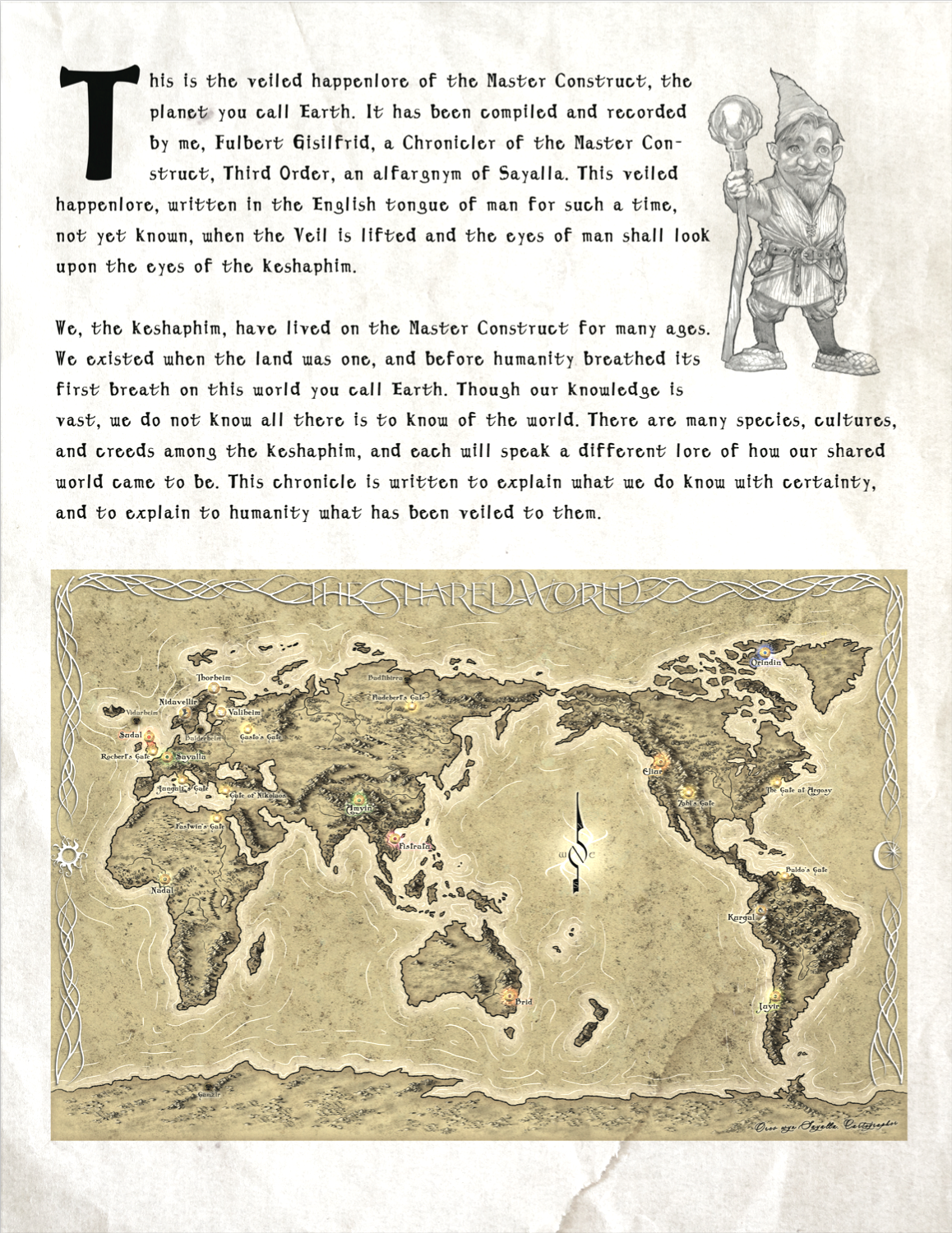The World According to… Me!
By Steven A. Guglich
One of the aspects of writing that I enjoy most is world building. There are worlds in my mind that I get to see slowly form as I imagine the flora, fauna, minerals, and cultures of this world. In my mind I can manipulate and adjust each and every part of this world until it fits my exact specifications. It’s quite exhilarating actually.
The hard part of world building is figuring out where to begin, especially if you are starting from scratch. You need to ask yourself, how? How did this world come to be? You need to know what motivates the people that live on that world. Why are the cultures of this world the way they are? I find the best way to start is backwards. For example, in my modern epic fantasy series, The Veil Saga, I have a race called the alfargnym. They are what we commonly know as gnomes. (More to why they are called alfargnym and not gnomes in the article The Alfargnym.) A subculture of the alfargnym are the svartalgnym. Basically they are the same race, they just have vastly different cultures. But why? Most alfargnym live just below the surface, while svartalgnym live deeper underground. Why? Most alfargnym are more gregarious and svartalgnym are anti-social. Why? In my mind I knew I wanted the gnomes of The Veil Saga to have those characteristics. But, I needed to know why… I needed to know why the two subcultures existed. My task however was a bit more complicated. I wasn’t really starting from scratch. Many of the stories from The Veil Saga are based on the myths, legends, and beliefs regarding the existence of creatures such as elves and gnomes. Complicating that even further is the setting of the first book. The Veil Saga takes place in the modern world, in our time, in modern cities. The gnomes live underground and occasionally take secret trips to cities such as New York. When I started writing The Veil Saga I set specific parameters for the races that inhabit the world. I asked myself, based on the myths and legends of these fantasy creatures, what would they be like if their cultures evolved into the 21st century? What kind of technology would they have? How would the myths and legends we know be translated into an actual history, rather than just myth and legend?
Jhaydun Dinan is a writer like myself in the early stages of creating the world for his novel series, Shadows of Imeria. Unlike my story, Jhaydun’s takes place in a world different from the one we live in. He didn’t have a framework of mythology and legend to follow, but he did look there for inspiration. The Vaari, a humanoid race that inhabits the mountains of Jhaydun’s world are based on the legends and myths surrounding the Amazon Warriors.
“I had to research a lot.” Jhaydun explained. “How a race could live solely in mountainous areas, what foods are easily grown in such areas, what kind of governments are developed, coming of age trials, and much, much more. I had to ask myself, what makes them different from the other cultures? What is their housing like? What are their traditions? What is their government like? Are they ritualistic, spiritual or superstitious? And many more questions.”
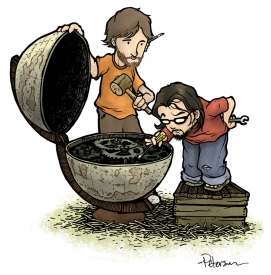 For fantasy writers, answering these questions can be a difficult and labored undertaking. But it can also be quite exhilarating. As the world of The Veil Saga continues to develop I get really excited. My wife is almost always my first sounding board and she gets to hear about this fantasy world and the creatures that live there before most others do. A few weeks ago when I told her about some aspects of the gnomes culture she said, “I love how you talk about them like you aren’t the one creating them.” But, that’s how excited I get when I talk about my world… I talk about it as if it really exists. But don’t get me wrong. I’m not delusional and I don’t think I am a god creating actual worlds. It’s just really exciting seeing the world you created start to form and how, like in reality, everything is connected.
For fantasy writers, answering these questions can be a difficult and labored undertaking. But it can also be quite exhilarating. As the world of The Veil Saga continues to develop I get really excited. My wife is almost always my first sounding board and she gets to hear about this fantasy world and the creatures that live there before most others do. A few weeks ago when I told her about some aspects of the gnomes culture she said, “I love how you talk about them like you aren’t the one creating them.” But, that’s how excited I get when I talk about my world… I talk about it as if it really exists. But don’t get me wrong. I’m not delusional and I don’t think I am a god creating actual worlds. It’s just really exciting seeing the world you created start to form and how, like in reality, everything is connected.
That’s what authors do. We see a world, filled with stories and it’s our job to make sure those stories are told.
Michael Baker is the author of the fantasy series Counterbalance. The first book in the series, The Thousand Scars, is available on Amazon and was published by Nordland Publishing. For his world, Michael envisioned a powerful dragon-humanoid species called the Astraoi, a race which is almost unheard of in the Counterbalance setting. And, like most world builders, Michael began the creation of the Astraoi with a question: “Could I make dragons original?”
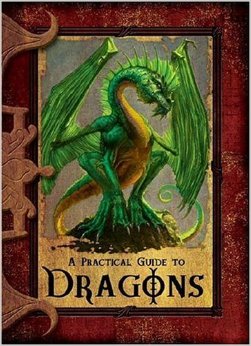 “Dragons are a cornerstone of fantasy, but I wanted to create something fairly new, if I could,” Michael went on to explain. “I asked myself, could dragons be used as beings of peace? A lot of dragons either talk, or are evil money holders. Could I make dragons evolve into something of a higher power? That eventually turned into my Astraoi, which are perhaps the most powerful creatures in my world. I draw upon a complex, almost ever-evolving magic system in my world which has a high risk – high reward plan around it, and I made the Astraoi virtually embodiments of magic. Then I asked myself; what would they do with that power? And what would their disposition be? I asked myself what I would do with such extreme power. My answer was ‘lounge around all day, studying everything I could get my hands on.’”
“Dragons are a cornerstone of fantasy, but I wanted to create something fairly new, if I could,” Michael went on to explain. “I asked myself, could dragons be used as beings of peace? A lot of dragons either talk, or are evil money holders. Could I make dragons evolve into something of a higher power? That eventually turned into my Astraoi, which are perhaps the most powerful creatures in my world. I draw upon a complex, almost ever-evolving magic system in my world which has a high risk – high reward plan around it, and I made the Astraoi virtually embodiments of magic. Then I asked myself; what would they do with that power? And what would their disposition be? I asked myself what I would do with such extreme power. My answer was ‘lounge around all day, studying everything I could get my hands on.’”
Michael describes the Astraoi as “humanoid creatures, standing on two feet. They have wings and giant scaly claws which erupt from their backs.” But they do not look this way because they have mated with humans. This is where Michael’s creation is really unique and strays from the typical dragon mythology. In the world of Counterbalance, there are dragons, although they do not appear in the series. These dragons grow at a very slow pace and do not reach maturity for thousands of years. “But eventually, some will mature,” Michael tells me, “They will shed their weight and body and transform into true Astraoi, which means fully evolved, harnessed humanoid Dragons. They look nothing like they did in their infant stages.”
Michael has developed a rich history for these people that include a mythology and a bit of mystery. “It’s rumored that only a dozen Astraoi exist in the world, and it’s said they have a lifespan of infinite power. The only known living Astraoi in memory is one called Drataocl. He claims there are another five like him who dwell in the mountains, but they are completely solitary, and prefer to keep to themselves. They don’t even acknowledge each other’s existence, spending their entire lives in isolation.”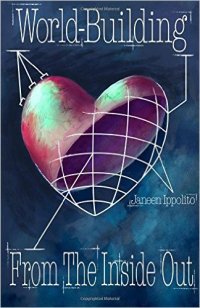
Janeen Ippolitio is another author who knows a thing or two about world building. In fact, she wrote a book on it, World-Building from the Inside Out. In her book she provides a wealth of helpful world building resources including worksheets and tips on every aspect of world building. There is even an accompanying workbook with questions. But I wanted to know more about Janeen’s personal experience as an author and how she used her world building skills in her writing. She is currently working on a steampunk fantasy series called The Ironfire Legacy. The first book in the series, titled Lawless, is available on Amazon and is published by Uncommon Universes Press LLC.
“In my fictional continent of the Scepterlands, humanity is divided roughly into four major city states: The Scepter of Knowledge, The Scepter of Commerce, The Scepter of Pleasure, and The Scepter of Industry. These all have their own unique cultures, technology, and social mores.”
Janeen also spent a fair amount of time developing the mythology and legends for her world. “The Scepterlands were formed after a great war left humanity in ruins.” She explained. “Rumor has it that the dragons actually stepped in and stopped the war, mediating peace treaties between the various people groups and working with them to establish the Scepters. Of course, everyone knows that dragons are evil, fire-breathing minions of the Depths, so this can’t possibly be true. Each Scepter has unique technology that works within its own geographical sphere, but works less well or not at all in other areas. Some say dragons cursed the land. Others say that it was humanity’s fault from some ancient catastrophe.”
As she created this new world, she too had some questions that needed to be answered. “I had to ask myself what was necessary to establish these different locations and what could possibly have left them in such a state. I knew I wanted these unique subcultures all on the same continent, but I had to play around with a lot of ideas before I figured out how they could have such disparate societies so close to each other. I finally settled on geographically-dependent technological progress, which would work as a natural isolating factor.”
What makes the world of The Ironfire Legacy unique is that Janeen took a different approach to the steampunk genre, or as she puts it, the “’punk” genre.
“I wanted to play around with four different ’punks: steampunk, dieselpunk, chromepunk (1920’s Art Deco), and lacepunk (1700s Scientific Rationalism with lightning rods). However, I also wanted some unifying factors that would allow for continuity with all the books (each book focuses on a different Scepter). I’m a history buff, so getting to explore and tinker with technology from different actual historical eras in a fantasy world was a real treat!”
Janeen’s love for history aided her in the research she did to create the Scepterlands and its cultures. “I didn’t want it to feel like four random historical eras plopped on the same continent, so I also did some world building on how geography and the unique history of this world would affect how various ‘punk’ elements manifested. Plus, since I wanted steampunk to be the strongest element, I had to find ways of weaving it in meaningfully within the other ‘punks’. So it comes off more as original cultures fused with steampunk than say, an alternate England.”
The stories of the Scepterlands have been ruminating and developing with Janeen for a while now. “I’ve written a lot of different stories about this world, sorting them into the different books, and so now I’m compiling all of that data together and keeping my facts straight. One thing I’ve had to come up with is a unique insect for each geographical area. Thankfully, I have an entomologist writer friend who loves to help out!”
Angie Grigaliunas, author of The Purification Era series, doesn’t consider herself much of a world builder.
“I personally don’t feel like my world building is extensive enough. There are so many things about my world that I don’t know, and I don’t know how things work in general, like taxes and everything with money in a more medieval setting – how did that go down? I develop a lot as I go, but I always want to go deeper, give a better, more-fleshed out version with each book. I try!”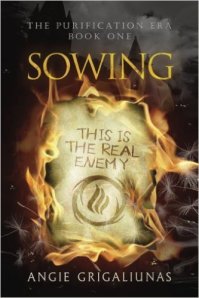
However, Angie is more well known for the world she created then she knows. In his review of Sowing, book one of her series, Michael Baker noted, “Angie is truly a talented author, and her creative world building talents are shown in the first installment of her fantasy series.”
The idea for the series began with one simple question.
“What would a world be like if a group like the KKK ruled it, but instead of against a different human skin color, what if they were against a creature-type race?”
That “creature-type race” developed into gray-skinned humanoids with cat-like reflexes Angie calls the itzalin. The ruling human regime in the world of The Purification Era are called Hulcondans. They are the ones she designed around her initial question. However, as the story developed, the Hulcondans followed less of a “KKK” design and Angie found that they were more likened to the Nazis. To really develop the Hulcondans, Angie did some research in that area.
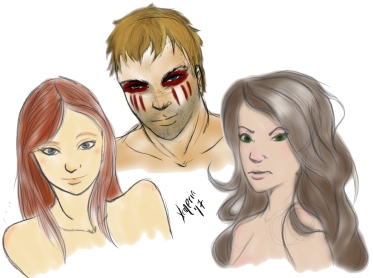
Characters from Sowing: Ariliah (left), Masrekah (center), and Rabreah (right). Illustrated by Xaneria Ann
“I’ve done a good bit of research into Nazis and World War 2. I needed to dig in deeper. Since they’re made up, most of the research I do centers around history and racism and rebellions and such.”
However, for the itzalin, she did very little research but drew more from sources of inspiration. “The elves from Hellboy 2, and Sesshomaru from Inuyasha. Oh, and the computer game Myst – there is a ‘world’ in that game where it’s this swamp place with tree houses and walkways. I’ve always pictured my itzalin villages like that. I’ve changed things as I’ve gone; originally, they lived to be hundreds of years old, but that didn’t work with half-breeds and ages and such. Also,” Angie laughs, “…cats! I picture the itzalin with some cat-like features – in the sense of balance and agility and stuff like that. They don’t act or look like cats! They just have developed hints of some of those awesome cat abilities.”
World builders, like their creations, come in all varieties. But one thing we have in common is that we write for the enjoyment of our readers. Of course there is some catharsis for us as well, but ultimately we have a story to share. So, I asked an avid reader her perspective on world building.
Emma Manktelow is the host of the Stark Reviews website where she writes some pretty detailed evaluations of the books she reads. In her reviews she frequently includes an analysis of the author’s world building… or lack thereof.
“As a reader, I would describe good world building as something that will create a complete picture in my mind,” Emma explains. “Essentially, a world with different countries, cultures, religions, politics, etc. of the world will be explored in the story, representing a whole civilization. Good world building will not focus solely on one particular fraction of the world. It will feel varied and diverse which will make for an intensely realistic story. Good world building will also help us readers to better understand a character and their motives as they interact with the world the author has created.”
One of Emma’s favorite authors is Brandon Sanderson. Anyone who has read a Sanderson novel knows what good world building looks like.
“Brandon Sanderson never disappoints me with his world building abilities. I like how ancient Sanderson’s worlds feel. They haven’t just popped into existence as soon as the story starts. They have long, complicated histories that you spend the entirety of the novel uncovering. Add to that interesting and compelling characters with unique magic systems and you have yourself a good book!”
She also credits Leigh Bardugo’s Grisha world as a noteworthy example of great world building. “I like the way we explore many different countries with their own individual cultures, faiths and social customs. Bardugo also has a great magic system in place and makes great use of how these systems might affect the various cultures and explores how different characters might react to the same magic.”
Evidence of Bardugo’s extensive world building can be found on her website where she has links for just about everything you might want to know about the Grisha world, including recipes.
As writers we are the tour guides, the ambassadors, and gatekeepers of fantastic worlds filled with wonder and adventure. As much as writers enjoy bringing visitors to these worlds, Emma does have some pearls of wisdom for writers.
“I would suggest to writers hoping to build immersive and enjoyable worlds to try to refrain from feeling the need to explain in detail every specific aspect of the world.”
Among writers we call this the infamous “info dump.” Emma gives a good explanation why this should be avoided at all costs. “We know you know everything there is to know about your world, but telling us too much can take us out of the story and can get tedious quite quickly.” Brandon Sanderson does a great job at avoiding info dumps and peeling away rich layers of the world over multiple chapters and through the eyes of many characters.
“Readers can know everything about a fictional world and imagine themselves living in it and reacting to it without being spoon-fed all the facts and statistics!” Emma says. “I would also suggest to just have fun with the world you’re creating. Fantasy knows no bounds and when you’re having fun, so are we!”


